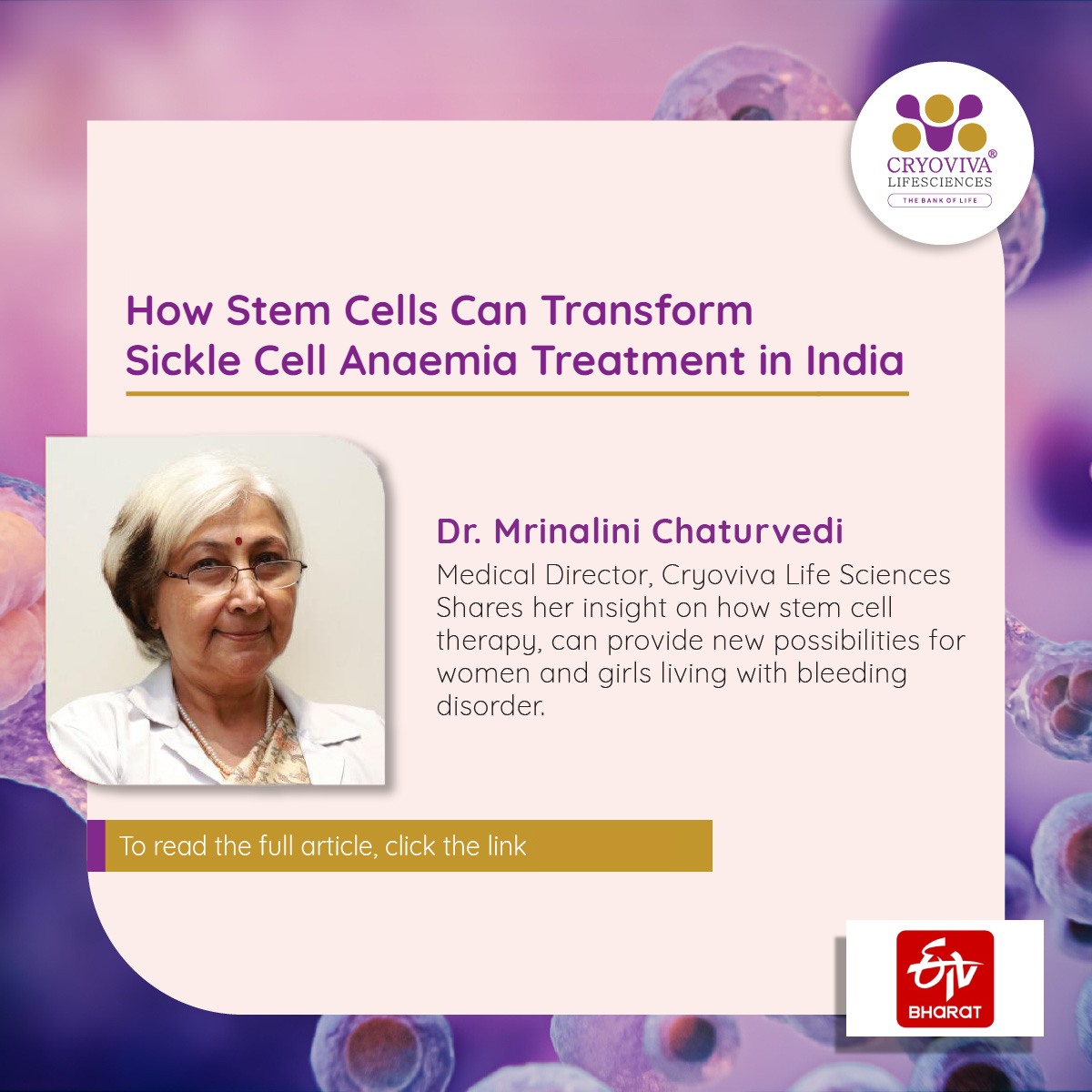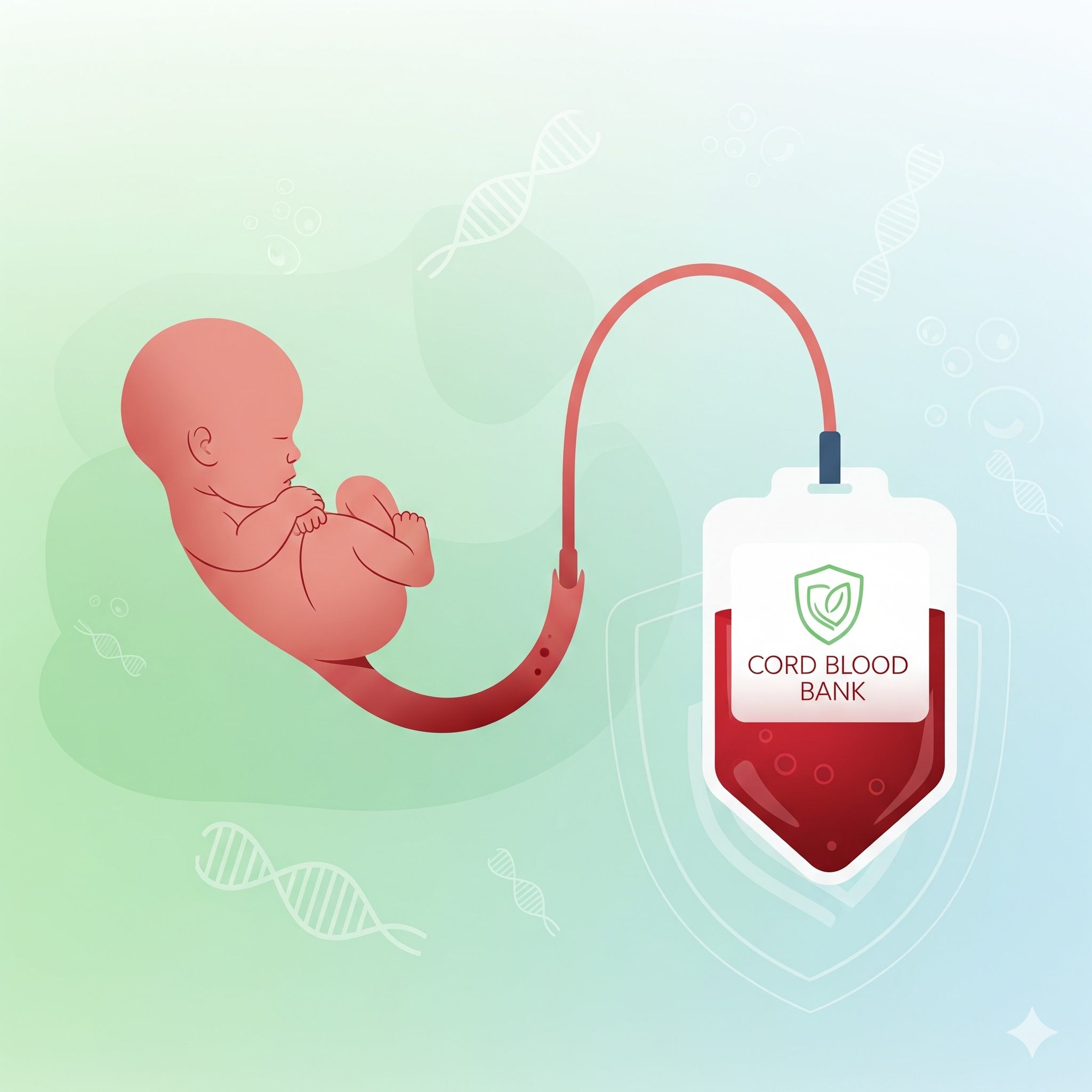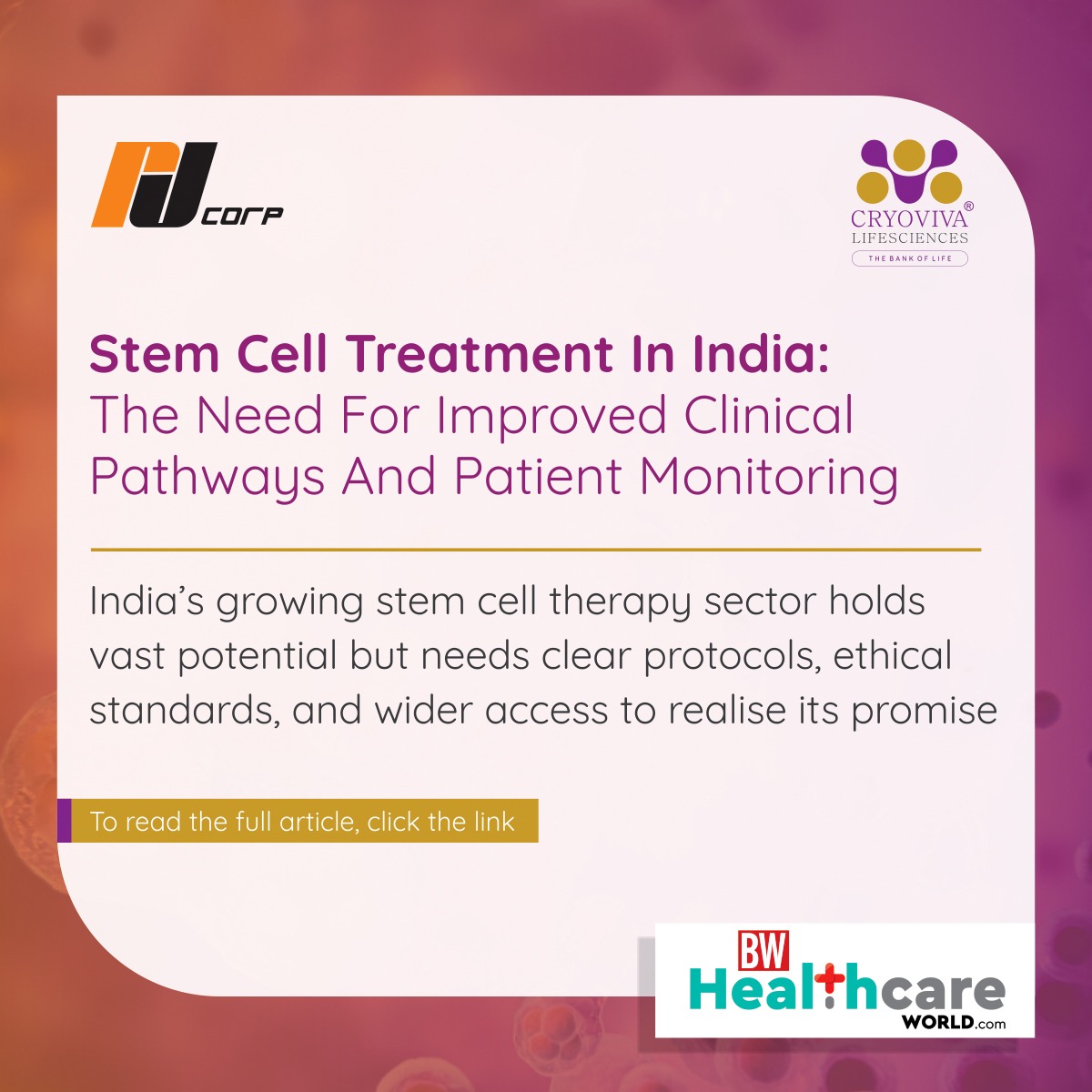How Stem Cells Can Transform Sickle Cell Anaemia Treatment in India

About the author: Dr. Mrinalini Chaturvedi, Medical Director, Cryoviva Life Sciences
Imagine a disease that silently attacks a child’s body from the inside out, altering the very cells that carry life-giving oxygen. It causes pain so intense that children cry out in agony, robs them of energy, and damages their organs one by one. This is Sickle Cell Disease (SCD) and India is one of its biggest battlegrounds. According to the Indian Council of Medical Research (ICMR), India carries nearly 20% of the global sickle cell load. States like Maharashtra, Madhya Pradesh, Odisha, Chhattisgarh, Gujarat, and parts of Tamil Nadu are among the worst affected.
The numbers are staggering: a 2023 AIIMS report estimates that over 1.5 lakh children are born with SCD each year in India. Most of these children do not live beyond a decade (unless the disease is detected early and managed with proper treatment). So what exactly is this disease, and how are stem cells offering new hope? On World Sickle Cell Awareness Day, le's find out:
What Is Sickle Cell Disease?
Red blood cells are usually soft, round, and flexible; like small boats that flow smoothly through our blood vessels, carrying oxygen to every organ. But in someone with sickle cell disease, these cells take on a hard, curved, sickle-like shape. This distorted shape causes the cells to clump together, block blood flow, and break down too quickly.
This leads to a host of serious health issues:

Image source: www.etvbharat.com
- Chronic pain (called vaso-occlusive crisis)
- Fatigue
- Increased risk of infections
- Organ damage over time
- Shortened life expectancy
Children with SCD often find it hard to attend school regularly or live an active life. Families in rural and tribal areas are frequently unaware of what’s happening until symptoms become severe.
Where Do Stem Cells Come In?
Enter hematopoietic stem cells: the body’s natural blood cell factories. Found in bone marrow and umbilical cord blood, these powerful cells can grow into healthy red blood cells, white blood cells, and platelets. In SCD, the root problem lies in the faulty stem cells that produce misshapen red blood cells. The most direct way to fix this is to replace them with healthy ones. This is where stem cell transplantation becomes a potential cure. It involves wiping out the patient’s faulty bone marrow cells and replacing them with healthy, functional stem cells from a donor. Over time, the new stem cells take over and start producing normal blood cells.
The Power of Cord Blood
Dr. Mrinalini Chaturvedi, Medical Director at Cryoviva Lifesciences, believes cord blood is an underused superpower in this fight. “Cord blood is a huge hope when it comes to treating sickle cell disease,” she says. Cord blood is the blood that remains in the umbilical cord and placenta after birth. It’s rich in hematopoietic stem cells, and if collected and stored properly at birth (especially from a healthy, genetically compatible sibling), it can later be used for transplantation.
“For families who already have a child suffering from SCD, storing the cord blood of a new baby can be a life-saving decision,” says Dr. Chaturvedi. “But unfortunately, awareness in India is still very low. Most families approach us only after the disease has advanced. The real difference happens when these conversations begin during pregnancy, especially in high-risk communities.”
What Makes Cord Blood Special?
Cord blood has several advantages when it comes to treating SCD:
- It’s easier to collect and store than bone marrow.
- It poses a lower risk of graft-versus-host disease (GVHD): a condition where transplanted cells attack the recipient’s body.
- HLA-matched sibling transplants using cord blood have shown over 90% success rates in stabilizing organ function and curing SCD.
- In India, where access to bone marrow registries and unrelated donors can be challenging, cord blood banking within families could be a game-changer.
Know Your Risks
SCD is a hereditary disease, meaning it is passed from parents to children through genes. If both parents carry the sickle cell trait (i.e., they are carriers but may not show symptoms), there's a 25% chance their child will be born with full-blown SCD.
The good news is that carrier status can be determined through a simple blood test. During pregnancy, couples at risk can opt for prenatal diagnostic tests such as chorionic villus sampling (CVS) or amniocentesis to check if the fetus has the disease, is a carrier, or is unaffected.
“Sensitivity and early detection play a critical role,” says Dr. Chaturvedi. “We need to integrate sickle cell screening and counselling into routine antenatal care, especially in tribal belts and high-risk areas.”
More Than Just a Cure
Dr. Gaurav Kharya, Director of the Centre for Bone Marrow Transplant & Cellular Therapy at Indraprastha Apollo Hospital, Delhi, says, “We’ve made remarkable progress. Hematopoietic stem cell transplant outcomes now exceed 90% success, irrespective of donor type,” he says. For patients who don’t respond to medications like hydroxyurea or suffer from severe symptoms, this transplant is now a standard of care.
Recognizing the urgency, the Indian government launched the National Mission to Eliminate Sickle Cell Anaemia by 2047, which aims to screen over 7 crore people under the age of 40. This is a massive step forward in tackling the disease at both the prevention and treatment levels.
Article Source: https://www.etvbharat.com/en/!health/how-stem-cells-can-transform-sickle-cell-anaemia-treatment-in-india-world-sickle-cell-awareness-day-2025-enn25061903989










 Enquiry
Enquiry
 Email
Email Phone
Phone
 Whatsapp
Whatsapp